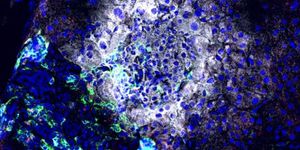New imaging technology developed at Stanford University could help prevent strokes and heart attacks caused by severe atherosclerosis. Symptoms of atherosclerosis usually are not apparent until more than 70 percent of a vessel is blocked. With the new technology, doctors could detect the disease much earlier.
To detect atherosclerotic plaques as early as possible, Stanford researchers created dual optical and PET/CT activity-based probes as an early, non-invasive diagnostic technique for people at risk for atherosclerosis and related conditions.
“These probes have potential benefits for non-invasive imaging of atherosclerotic plaque inflammation, potentially leading to the application of this probe in the clinic to help identify patients at high risk of developing premature atherosclerosis,” said co-lead author Matthew Bogyo, PhD.
The probes work by targeting proteases secreted by specific cells of the immune system: macrophages. These cells play a large role in vascular inflammation and the formation of atherosclerotic plaques; they produce proteases such as matrix metalloproteinases and cathepsins that contribute to the formation and progression of atherosclerosis. Proteases are enzymes that break the bond between amino acids, the molecular glue holding proteins together.
Bogyo and his team studied their activity-based probes (ABPs) in mouse models of atherosclerosis, where the probes were designed to target cysteine cathepsins. The ABPs were then used to target human carotid plaques. Both of these studies together provided an image of activated macrophages populations via optical and PET/CT technology.
In the future, this new technology will have the opportunity to enhance many different imaging techniques: fluorescence, PET/CT, molecular imaging, and nuclear medicine. Plus, the ABPs can be used not just to detect atherosclerosis and vascular inflammation but proteins and markers associated with a variety of other diseases.
“These probes provide accurate detection of lesions undergoing high levels of inflammatory activity and extracellular matrix remodeling,” Bogyo said. “They not only enable early disease detection, they can provide real-time monitoring of therapeutic responses and clinical drug efficacy."
Thanks to this new technology, the future of disease onset monitoring and the development of therapeutic agents is as bright as ever.
This study was recently published in the
Journal of Nuclear Medicine.
Sources:
Nature Scitable,
Society of Nuclear Medicine









